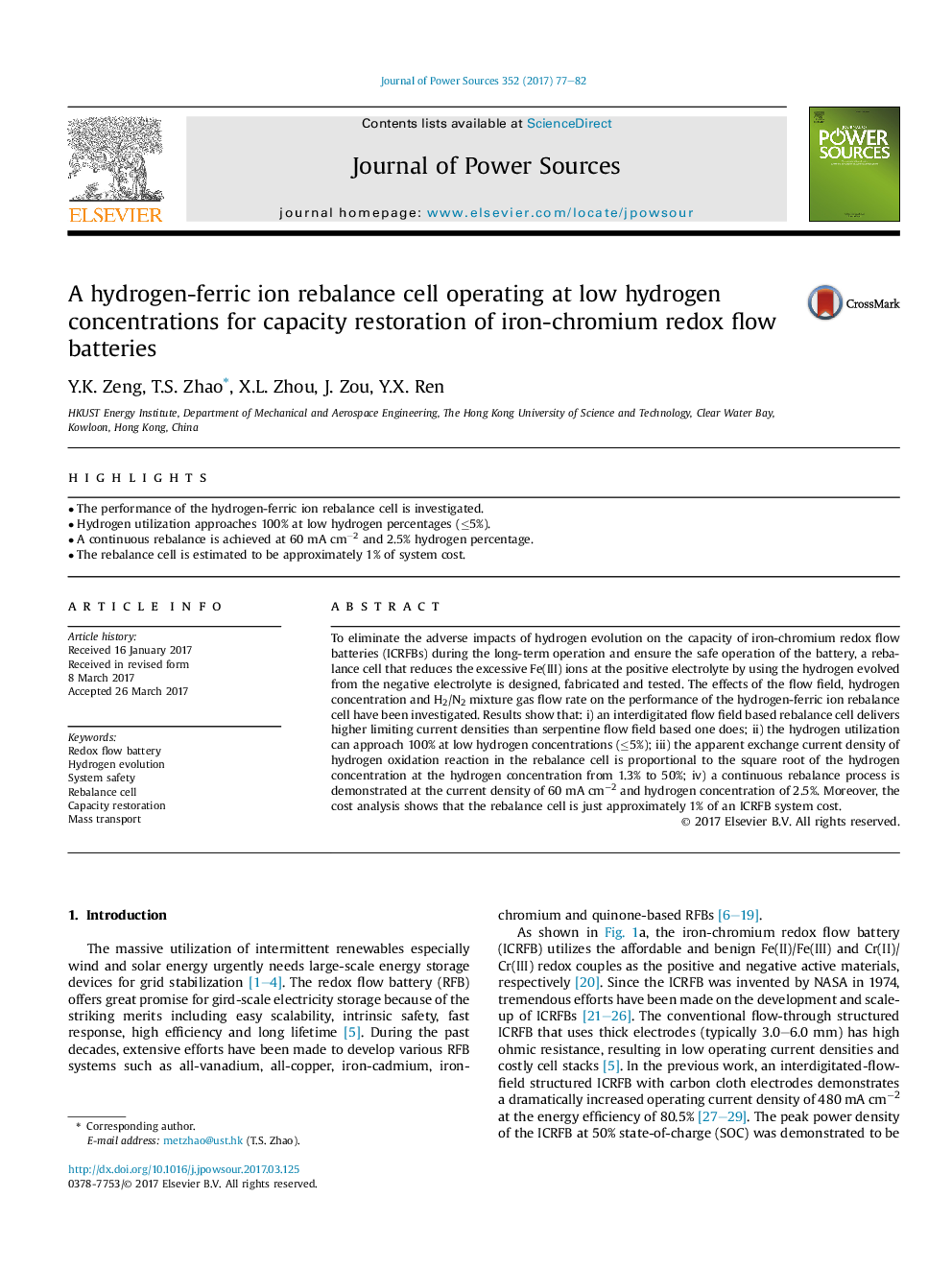| Article ID | Journal | Published Year | Pages | File Type |
|---|---|---|---|---|
| 5149243 | Journal of Power Sources | 2017 | 6 Pages |
Abstract
To eliminate the adverse impacts of hydrogen evolution on the capacity of iron-chromium redox flow batteries (ICRFBs) during the long-term operation and ensure the safe operation of the battery, a rebalance cell that reduces the excessive Fe(III) ions at the positive electrolyte by using the hydrogen evolved from the negative electrolyte is designed, fabricated and tested. The effects of the flow field, hydrogen concentration and H2/N2 mixture gas flow rate on the performance of the hydrogen-ferric ion rebalance cell have been investigated. Results show that: i) an interdigitated flow field based rebalance cell delivers higher limiting current densities than serpentine flow field based one does; ii) the hydrogen utilization can approach 100% at low hydrogen concentrations (â¤5%); iii) the apparent exchange current density of hydrogen oxidation reaction in the rebalance cell is proportional to the square root of the hydrogen concentration at the hydrogen concentration from 1.3% to 50%; iv) a continuous rebalance process is demonstrated at the current density of 60 mA cmâ2 and hydrogen concentration of 2.5%. Moreover, the cost analysis shows that the rebalance cell is just approximately 1% of an ICRFB system cost.
Related Topics
Physical Sciences and Engineering
Chemistry
Electrochemistry
Authors
Y.K. Zeng, T.S. Zhao, X.L. Zhou, J. Zou, Y.X. Ren,
